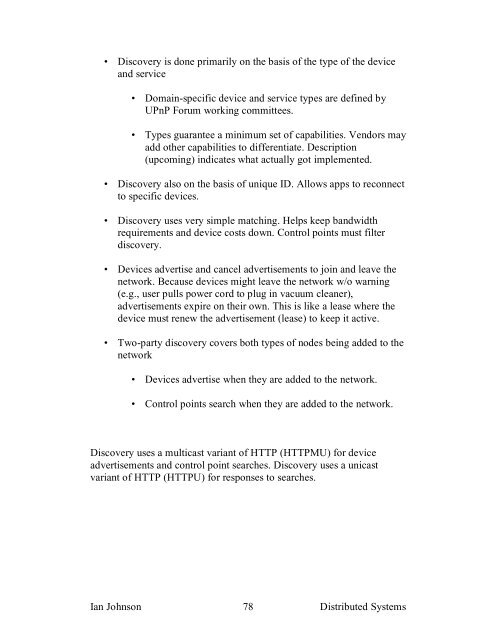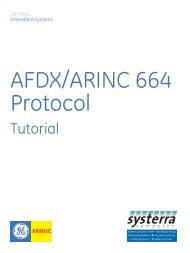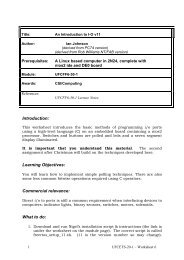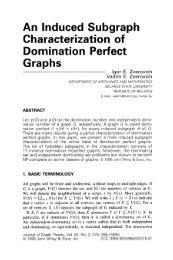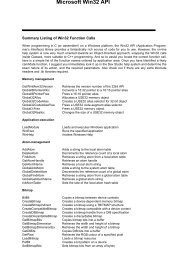Naming, Trading, Directory and Discovery Services (CDK â chap.9)
Naming, Trading, Directory and Discovery Services (CDK â chap.9)
Naming, Trading, Directory and Discovery Services (CDK â chap.9)
You also want an ePaper? Increase the reach of your titles
YUMPU automatically turns print PDFs into web optimized ePapers that Google loves.
• <strong>Discovery</strong> is done primarily on the basis of the type of the device<strong>and</strong> service• Domain-specific device <strong>and</strong> service types are defined byUPnP Forum working committees.• Types guarantee a minimum set of capabilities. Vendors mayadd other capabilities to differentiate. Description(upcoming) indicates what actually got implemented.• <strong>Discovery</strong> also on the basis of unique ID. Allows apps to reconnectto specific devices.• <strong>Discovery</strong> uses very simple matching. Helps keep b<strong>and</strong>widthrequirements <strong>and</strong> device costs down. Control points must filterdiscovery.• Devices advertise <strong>and</strong> cancel advertisements to join <strong>and</strong> leave thenetwork. Because devices might leave the network w/o warning(e.g., user pulls power cord to plug in vacuum cleaner),advertisements expire on their own. This is like a lease where thedevice must renew the advertisement (lease) to keep it active.• Two-party discovery covers both types of nodes being added to thenetwork• Devices advertise when they are added to the network.• Control points search when they are added to the network.<strong>Discovery</strong> uses a multicast variant of HTTP (HTTPMU) for deviceadvertisements <strong>and</strong> control point searches. <strong>Discovery</strong> uses a unicastvariant of HTTP (HTTPU) for responses to searches.Ian Johnson 78 Distributed Systems


